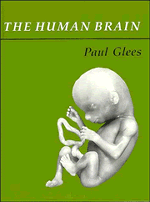Book contents
- Frontmatter
- Contents
- Preface
- 1 Introduction to brain research
- 2 Evolution of the nervous system
- 3 Fine structure of the nervous system
- 4 The nature and transmission of the nervous impulse
- 5 Glia, cerebral blood vessels and neurons
- 6 Cerebral blood and cerebrospinal fluid systems
- 7 The cerebral hemispheres
- 8 The spinal cord
- 9 The brainstem and cerebellum
- 10 The hypothalamus and the autonomic nervous system
- 11 Olfaction and taste
- 12 The auditory system
- 13 Vision and visual pathways
- 14 Touch, pain and proprioception
- References
- Index
10 - The hypothalamus and the autonomic nervous system
Published online by Cambridge University Press: 31 October 2009
- Frontmatter
- Contents
- Preface
- 1 Introduction to brain research
- 2 Evolution of the nervous system
- 3 Fine structure of the nervous system
- 4 The nature and transmission of the nervous impulse
- 5 Glia, cerebral blood vessels and neurons
- 6 Cerebral blood and cerebrospinal fluid systems
- 7 The cerebral hemispheres
- 8 The spinal cord
- 9 The brainstem and cerebellum
- 10 The hypothalamus and the autonomic nervous system
- 11 Olfaction and taste
- 12 The auditory system
- 13 Vision and visual pathways
- 14 Touch, pain and proprioception
- References
- Index
Summary
The hypothalamus
Structure
The central switchboard is composed of the hypothalamus and its endocrine outlet, the pituitary gland. The hypothalamus is a relatively small funnelshaped pouch of the ventral part of the diencephalon and lies on the basal surface of the brain (Figs 10.1 and 10.2). A stalk connects the hypothalamus with the pituitary gland, which consists of two different parts or lobes, often called hypophysis in contrast to the epiphysis – a dorsal pouch of the diencephalon.
The stalk connects with the posterior lobe and is thus an outgrowth from the hypothalamus. The posterior lobe is for this reason referred to as the neurohypophysis and the anterior lobe, developing in ontogeny from the roof of the oral cavity, is glandular in structure and also called the adenohypophysis. The two lobes in primates are closely approximated with an intermediate zone between, but in some vertebrates, such as the elephant, they are separated. The glandular or anterior part has a number of differently granulated cells, which also stain differently. Histology discriminates five cell types: (1) undifferentiated stem cells; (2) α cells; (3) β cells; (4) γ cells; and (5) δ cells (Fig. 10.1).
Immunohistochemistry shows that alpha-cells secrete growth hormone and prolactin, beta-cells adreno-cortico-trophic hormone and thyrotrophic hormone, and the delta-cells secrete gonadotrophic hormones (Martin et al., 1977; Bhatnagar, 1983).
The stalk itself carries pathways and also fibres which transport neurosecretory granules (Figs 10.3 and 10.4). These granes are taken up by the capillaries of the posterior lobe. In the hypothalamic nuclei (Figs 10.4 and 10.5) we encounter a clear double neuronal function, to produce action potentials and neurosecretory granules.
- Type
- Chapter
- Information
- The Human Brain , pp. 147 - 152Publisher: Cambridge University PressPrint publication year: 1988



